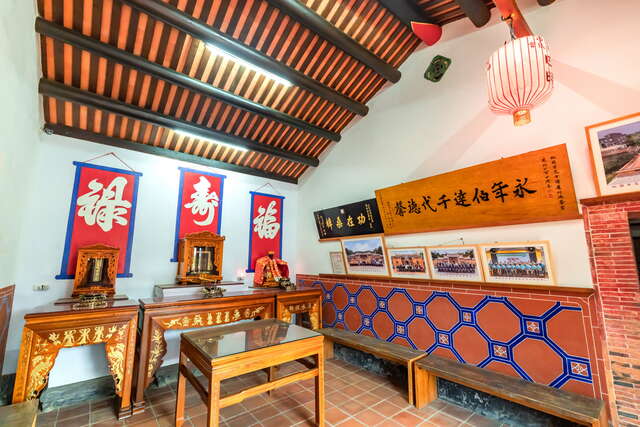Luzhu Dexin Hall Introduction
Deh Hsin Tang is not just an ancient building; it is a living history book, witnessing the development and changes of clan culture. This ancestral hall dates back to the Yongzheng period of the Qing Dynasty, when the Chen family from Quanzhou, Fujian, migrated to Taiwan, cultivated the land, and built Deh Hsin Tang as a place for family worship and cohesion. Today, it has been designated as a municipal historic site and serves not only as a spiritual symbol for the family but also as an important witness to Taiwan's clan culture. The beauty of Minnan architecture and the intricate craftsmanship reveal the first charm of Deh Hsin Tang through its elegant design. The red brick walls, delicate carved wooden doors, and auspicious swallow-tail ridges showcase the exquisite skills of traditional craftsmen. When sunlight slants in, casting shadows that intertwine with the architecture, it feels as if one has traveled back hundreds of years, experiencing the beauty of the blend between history and craftsmanship. Unlike commonly replicated historic sites, Deh Hsin Tang retains historical traces; the weathered brick walls and the inscriptions left by generations of repairs are marks of time. This is not just a static historical relic but a cultural space that is warm and full of stories. With a century of family heritage, the ancestral hall plays a crucial role in traditional Minnan society as a place for family members to worship ancestors and pass on ethics. For over a hundred years, Deh Hsin Tang has hosted countless ancestral rites and clan gatherings, emphasizing family unity and the spirit of "thinking of the source when drinking water." For travelers, this place is not only a testament to history but also allows them to deeply grasp the cultural values of Taiwan's traditional society. Through guided tours, one will learn how Taiwanese clan societies maintain blood ties through ancestral halls, witnessing the resilience and continuity of this historic site through changing times. Deh Hsin Tang is more than just a historic site; it is a living cultural experience. It periodically hosts activities such as calligraphy experiences, paper-cutting art, and traditional craft demonstrations, allowing travelers not only to visit but also to participate hands-on and feel the charm of Taiwan's traditional arts. Imagine yourself sitting on an ancient wooden chair, holding a brush, and feeling the strength in the strokes of calligraphy; or taking up scissors to intricately carve out complex patterns, each cut imbued with respect for tradition. These interactive experiences immerse culture not just to be observed, but deeply integrated into the traveler's memory.







































